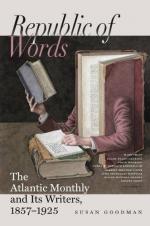These Canadian Hurons are not, in their present condition, corroborative of the Cooper specifications of Indian life: rather the contrary, in fact. There is a wing of them—a wing without feathers, indeed—settled down at Amherstburgh, on the far western marge of Lake Erie, in Canada, quite six hundred miles away from their brethren of Lorette. When shooting woodcock once in that district, I entered the comfortable log farm-house of the chief of the settlement, whose name was Martin. He was a fat, rather Dutch-looking Indian, but still active and industrious,—for a man who is an Indian and fat. I asked Mr. Martin if he hunted much; to which he replied, No, he did not,—adding, that he never was far into the woods but once in his life, and that was on his own lot of a hundred acres of bush, in which he was lost, on that occasion, for two days.
Among the Hurons of Lorette there are a few young men who hunt moose and caribou in the proper season; but the men, generally speaking, as well as the women, are engaged in the manufacture of snow-shoes and moccasons,—articles for which there is a great demand in Lower Canada. Philippe Vincent, a chieftain and shoemaker of the tribe, told me that he had disposed of twelve hundred dollars’ worth of these articles, on a trip to Montreal, from which he had just returned. Many articles of Indian fancy-work are also manufactured by them: beaded pouches for tobacco, bark-work knick-knacks, and curious racks made of the hoofs of the moose, and hung upon the wall to stick small articles into.
On the profits of this work many of them live in comfort,—nay, in luxury. Paul Vincent, a cousin of Philippe mentioned above, and, like him, a chief of the tribe and a renowned builder of snow-shoes, paid two hundred and seventy-five dollars for a piano for his daughter, when I was at Quebec, five or six years ago. Whenever I visited Philippe, that stately man of the Hurons would usher me into a little parlor with a sofa in it and a carpet on the floor; he would produce brandy in a cut decanter, and cake upon a good porcelain plate, and would be merry in French and expansive on the subject of trade.
Most of these hybrid Hurons are quite as white as their Canadian neighbors; but they generally have the horse-tail hair, and black, beady eye of the aborigines. The ordinary dress of the men, in winter, is a blue blanket-coat, made with a capuchon, or hood, which latter is generally trimmed with bright-colored ribbon and ornamented with beads. Epaulettes, fashioned out of pieces of red and blue cloth, somewhat after the pattern of a pen-wiper, impart a distinguished appearance to the shoulders of these garments, which are rendered still more picturesque by being tucked round the body with heavy woollen sashes, variegated in red, blue, and yellow. Some of these sashes are heavily beaded, and worth from five to ten dollars each; and they, as well as the Indian blanket-coats,




